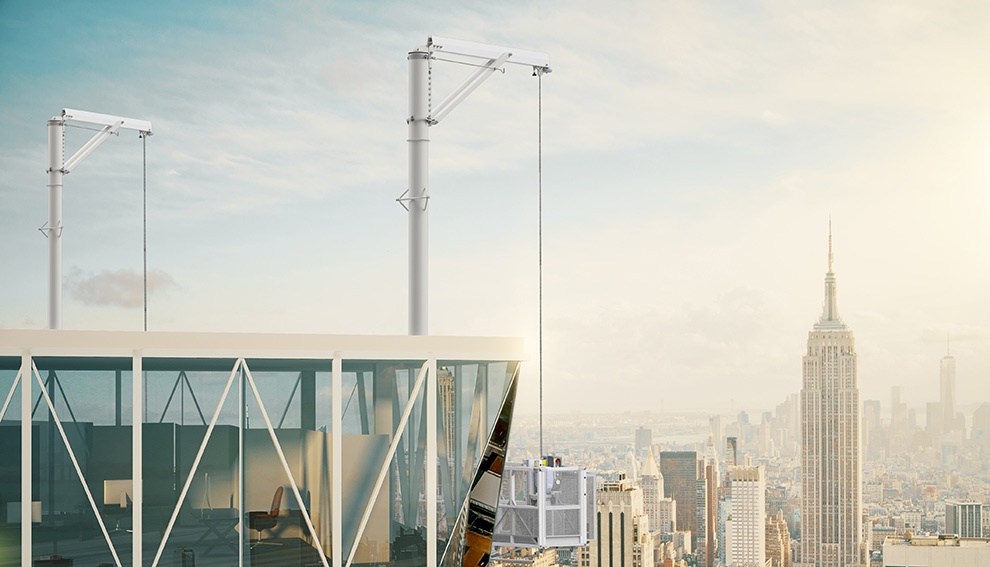
Facades are the most visual element of buildings that determine wether the building is seen as a beautiful and successful in the eyes of people.
You want to keep the buildings facades up to standards, or it won’t be seen as a high-quality object which generate respect and admiration.
Facades have the power to impress people but they also have the power to ruin the whole area when designed badly.
According to study of Jan Janssen from Industry & Buildings at Royal HaskoningDHV, when it comes to preferences for facade colours, it appears to be more a question of which colours do fit within than which colours are beautiful.
In fact, the ranking of the colours’ fitness was based more on conventions than on aesthetic considerations.
That means it’s critical that building facades fit into the neighbourhood when it comes to design, shape, colour, etc.
If this is something you find interesting we have written a blogpost of what makes a building beatiful.
Today, architects must design the building skin which will adjust itself in the neighbourhood and have a solution to be maintained to stay beautiful and in shape for years to come.
Here’s the definitive guide to compare different facade access systems.
Why are Building Maintenance Systems needed?
Like I said earlier facades must be maintained to stay in shape and look beautiful, but it’s not that easy to choose right kind of solutions for that.
Why is that?
For today’s sophisticated building façades to look and perform at their best it is essential they are inspected, cleaned and if necessary repaired on a regular basis.
Maintenance can be defined as working on to keep the building in a functioning and safe state and preserving it from failure or decline.
Regular service and maintenance will make sure your assets maintain optimum efficiency and safety.
Maintenance operations can include setting up advertising, cleaning windows, fixing leakages or damages, inspection and maintenance of lighting, ventilation, sprinkler system and much more.
Having a right kind of solution to maintain the building can be a lifesaver in terms of safety, beautiful design and user experience.
In most cases, there is a clear demand from the Facade Contractor that some kind of access system is available to check and repair the facade.
Otherwise there is no warranty.
In many countries there is a law that whoever designs a building or structure must make sure it can safely be accessed for normal maintenance and light repair.
The architect might be personally liable if this is neglected.
But it’s not easy to know what is right solution for each building.
There are so many different options for maintaining buildings, but no one correct universal answer for knowing which is best for you.
The Europen Standard EN1808 describes Permanently Installed BMU (Building Maintenance Unit) - Systems and also TSPs (Temporary Suspended Platforms) that are more used for construction work.
Laws, shapes, location, materials, structural carrying capacy, and so many different factors have impact on the solution you should choose.
Today I’ll share some insight on how to know which solutions could help you to design a building with best possible maintenance system.
Comparing Facade Access Systems
It’s essential to understand why there are different solutions for each buildings.
Think of BMUs as part of an investment in your building and choose the most appropriate, high-quality products that will meet your building maintenance needs for years to come.
To get an idea of possibilities, let’s narrow down Facade Access Systems into three upper level options.
- Mobile Elevated Work Platform (MEWP)
- Permanent Access Solutions
- Personal Suspension Systems
Mobile Elevated Work Platform
Mobile Access Machines are hydraulic or mechanical lifting solutions that are standing on ground, reaching up and taken away after the job is done. These can be purchased or rented and are relatively low-cost solutions.
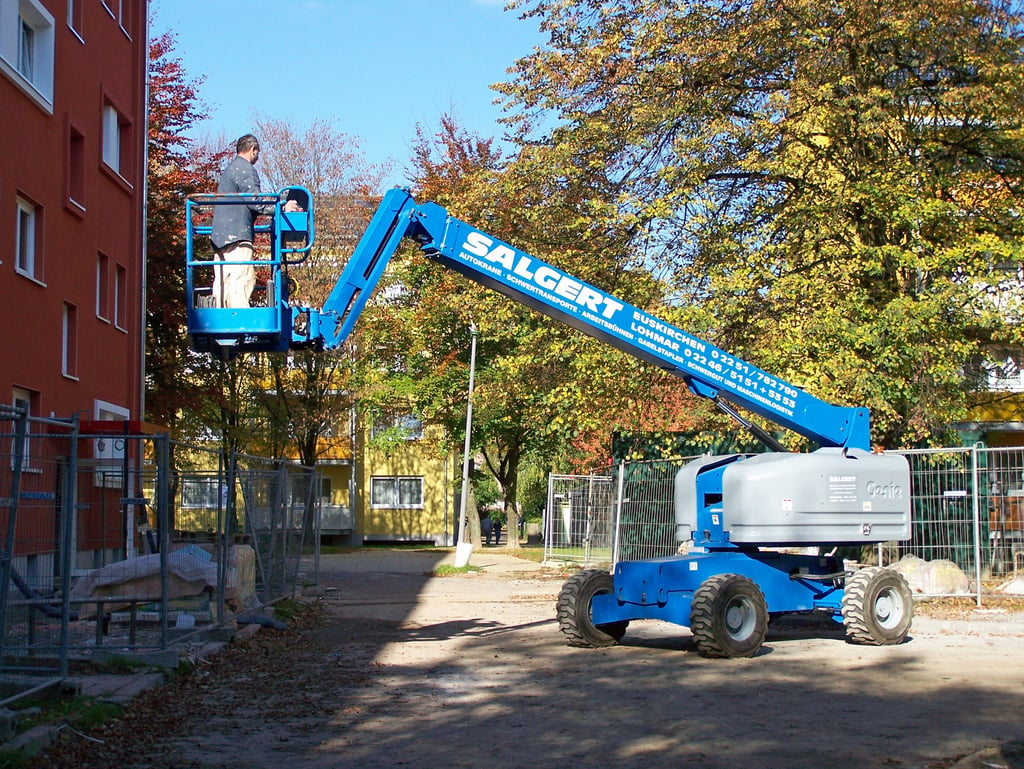
These will not reach very high, and are best suited for low buildings which have enough space in the ground level.
The price of mobile access machines increase a lot with increasing lifting height and outreach.
Now, there needs to be free access near the external or internal facade and possibility to use that space safely for a time needed.
While you may not work on a crowded area the building needs to have a lot of own space or the work needs to be done during quiet hours.
The Finnish company Simeri will help you if you are based in Finland or Estonia.
Permanent Access Solutions
Suspended and Fixed Access Systems offer a great way to maintain all kinds of buildings.
These solutions are part of the buildings and system designers work with architects from an early stage for being able to provide efficient systems that blend seamlessly with the building’s architecture.
Permanent Access Solutions have three subcategories.
Monorails and Cradles are used on large flat or curved surfaces.
Systems comprises an aluminium track complete with suspension trolley, and are used in conjunction with BMU Cradles.
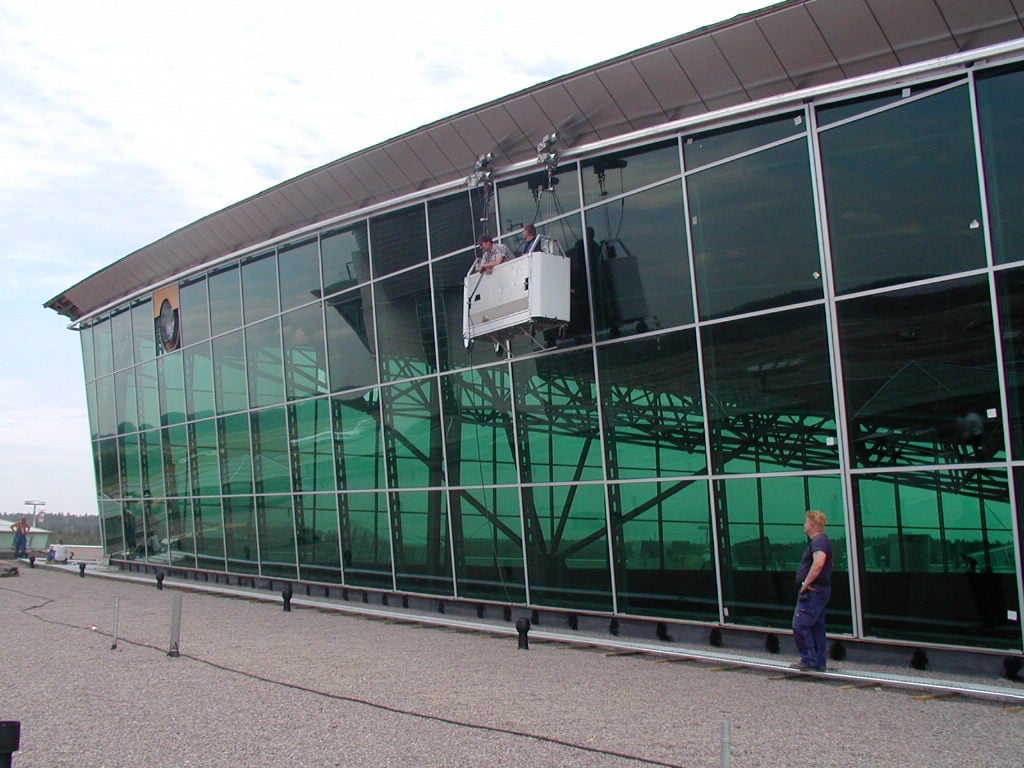
Suspension Trolleys travel along a Monorail with either manual or motorized drive, usually at the top of the building and cradles can be lowered to the required level for access to the facade.
Why Monorail System? It's usually the only option when there is a limited roof space in the building.
Monorail Systems will often blend to building architecture and can be used even in the most complex buildings.
But what is the real advantage of these lightweight Monorail Systems?
Think about it:
The lightest Monorails are 3,6kg / meter and most heavy profiles should’t weighs more than 8kg/meter. If you compare that to heavy Roof Cars the difference is huge.
For example the L Tower is an iconic residential tower in Toronto, Canada. It’s Building Maintenance Unit, a huge Roof Car weighs 79.000kg.
Imagine if you could use relatively light weight Monorail System and remove over 70.000kg weight from the roof.
By using the heavy Roof Car the weight could increase almost 800% comparing to Monorail System.
Lighter solutions would allow totally different structures and load capacities for the building and create massive savings in terms of money.
That’s the reason why the best architects and constructors together with consultants seek for best suiting solutions in the early phase of planning.
Noracon from Norway is another high-quality manufacturing company with experienced engineers to assist you.
This looks amazing, right?
Naturally Monorail Cradles have their limits too. Usually Cradles can climb “only” 150m and therefore are not the best solution for most of the skycrapers and really high buildings.
A davit system is an economic, easy and cheap system which is the most used solution for simple facades.
These are invisible from the ground level as they are movable and thus can be stored away when not in use. Usually they have wheels to make them easy to move.
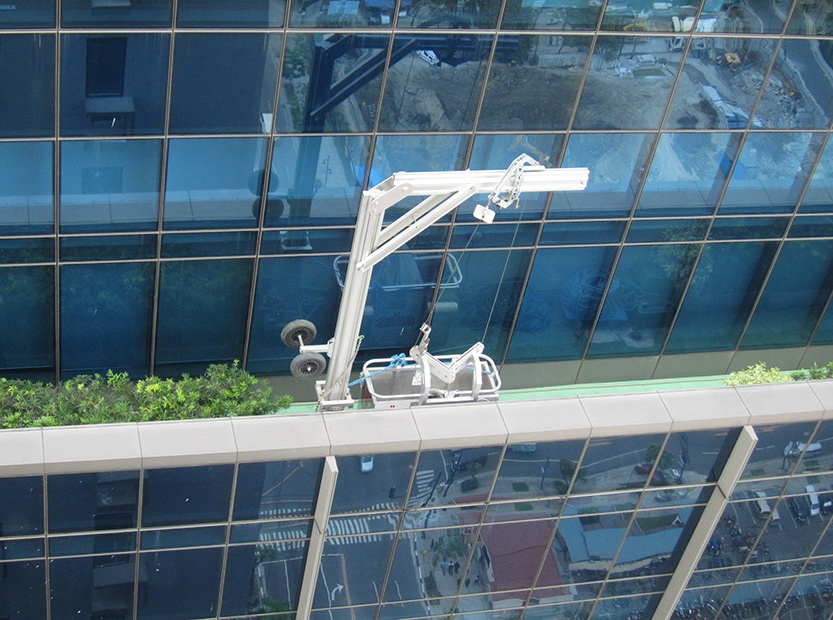
Often the davits are used together with a long modular suspended platform, making it possible to access even 40 feet (12 meters) wide parts of a facade in one go before the davits are moved to a new location.
Bacause davits are manually moved they are not the most suitable solution in a building with long facade or curved or incline roof.
Telescopic Roof Cars are customized Building Maintenance Units, designed for skycrapers and buildings where an extensive outreach is required.
The roof car can be stationary or traversing along steel tracks depending on the project.
A suspended platform suspended from the jib arm is a light-weight cradle that is moved up, down and sideways with the roof car machinery.
Roof Cars are heavy and expensive solutions, but in some cases the only option to access facades. The heaviest Roof Car weight 136.000kg and is over 44 meters tall.
So thinking about a Telescopic Roof Car, I recommend discussions with multiple consultants and experts to be sure these “monsters” are your best option.
Ask an opinion from experienced professionals. For example http://www.coxgomyl.com/ has over 50 years experience of providing innovative and complete facade access solutions.
Gantries and Ladders are a “must” for skylights and glass roofs.
The gantries are designed to travel along aluminium tracks, with manual or motorized trolleys making it easy and efficient to access the whole roof area.
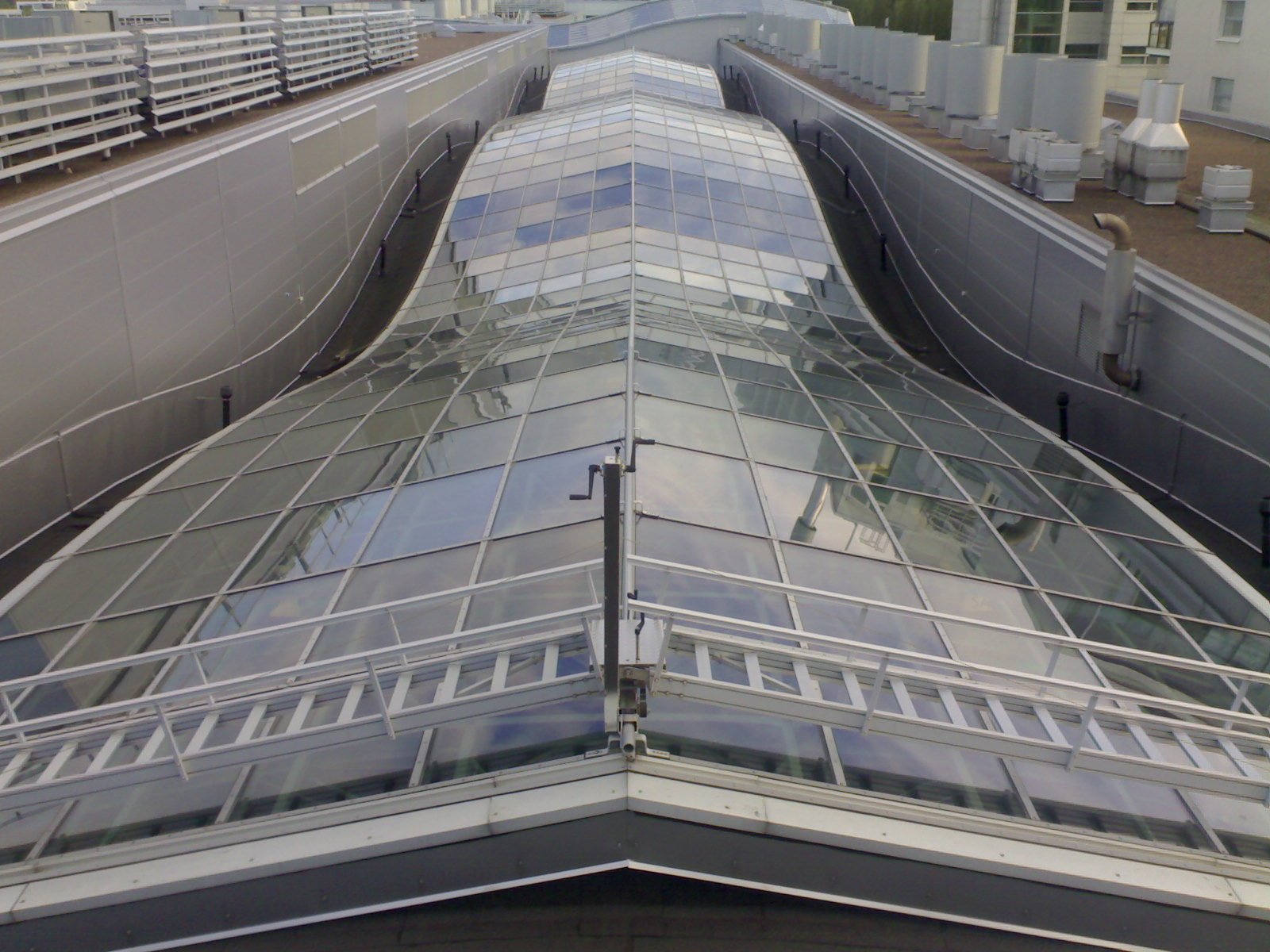
Travelling Gantry & Ladder Platform Systems are designed to provide safe access to flat, sloping, curved or vertical areas of glazing.
The most typical uses for a gantry is to follow any roof shape to access the inside or outside of glass roofs, the atria, or skylights.
By definition, a gantry is a workplace with a continuous footway or treads and inclined to the horizontal at an angle of 65° or less.
A ladder is a workplace with rungs or treads and inclined to the horizontal at an angle of more than 65°.
To put it simple, you need your hands to climb up a ladder but you walk freely within a gantry.
Most Gantries and Ladders are made of light weight aluminium.
Personal Suspension Systems
If you can’t use mobile or fixed access systems you can choose a Rope Access System.
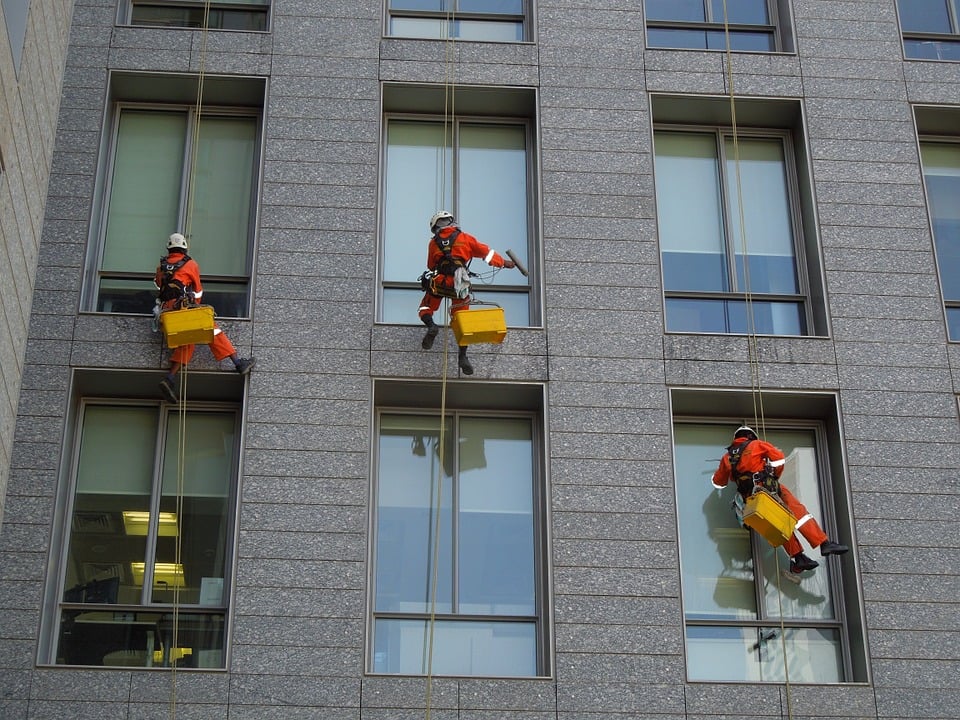
Personal suspension systems are a range of anchorage devices designed and installed specifically to allow access to high level facades via industrial rope access techniques.
They allow “Spiderman” workers to descend, ascend, and traverse ropes while suspended by a harness.
Sometimes it is impractical to incorporate a full permanent access system into a building design.
Alternatively, existing buildings may not be able to accept the applied loads of large counterbalanced access machines.
The advantage of Rope Access Systems is reaching into difficult small locations safely, and they are versatile if you use the system to enable operatives to traverse quickly between work places without the need for multiple rope rig and de-rig.
Monorails are more and more often used to improve the efficiency of rope access work.
Rostek-UK offers a range of lightweight and practical personal suspension systems and expertise in both BMUs and Rope Access Systems.
The OSHA (Occupational Safety and Health Administration) has confirmed that “No rope descent system is used for heights greater than 300 feet (91 m)”. Several European guidelines also restrict the use of Rope Access for big facades.
With this in mind, Rope Access System is not suitable for tall buildings.
Additionally, using climbers for maintenance is relatively slow way of working.
In many countries Rope Access Technicians are very expensive, so often the saving in investment cost is radically ruined by high daily costs.
Why should you use Facade Access Consultants?
Perhaps the most important thing when selecting Access System is to understand why a specific solution fits the building and what options you have.
What are the requirements for building maintenance?
In other words knowing when the solution will be used and how. And what the law expects from you.
What needs to be taken into consideration in architecture and how can you improve the building by knowing what is possible regarding Facade Access Systems?
Luckily, there are good advisors available.
Leading Building Maintenance Unit Manufacturers offer consulting and designing for projects with only imagination as a limit. You can find many independent third party niche consultancy firms specialising in buildings and structures with deep understanding of the Facade Access Industry.
Whatever the case, you’ll have assistance in your hands and it will prove to be key to success.
Not only guiding you to find out high quality Access Systems with the best price, but also being able to make roof structure calculations correct from the beginning.
Creating Facade Access Systems is niche work that requires designing, project management and a detailed knowledge of mechanical engineering in the industry.
The requirements of each project are different and buildings are getting more and more complex.
A specialist consultancy for Facade Access & BMUs will be able to help you to find an efficient and safe solutions, minimize the impact on building design and meet the highest safety according to EN standards.
In addition they will be able to ensure that the equipment is provided within International Quality & Safety Standards and that health & safety requirements for the particular environment are met.
By using a little time and effort with a good consultant you can make significant cost savings in terms of time and money.
A professionalconsultancy will give you advice on:
- Planning
- Efficiency
- Optimum and safe access solutions
- Bespoke solutions
- Price range of different access solutions
- Longevity of the building
- Certified BMU Manufacturers and their strengths and weaknesses
- Bid assistance
- Fall Protection Inspections ensuring safe working environment
- Codes, standards and regulatory requirements
Conclusion
Don't you wish your building would look beautiful and stay that way in the future?
Don't you wish you could use solutions available to keep architecture as aesthetic as possible without sacrificing workers safety and save money at the same time?
Of course you do, we all do.
Facade Access Solutions are not the most exciting part of buildings, but you must pay attention to them and ensure that you’re not making some big mistakes that could sabotage your overall project.
Make sure you have an understanding of different solutions and ask help from multiple sources at the early stage of process.
Buildings are unique so don’t forget to find out the possibility of complex bespoke solutions.
With these tips I hope you have a better understanding what needs to be taking into account when planning building maintenance and facade access.
